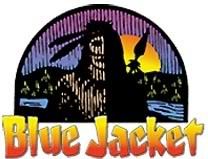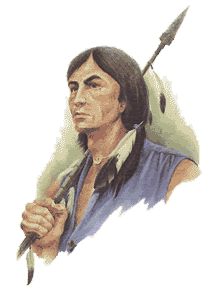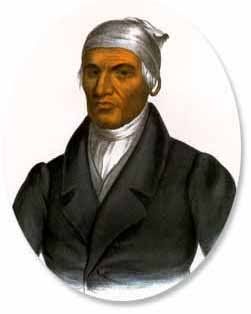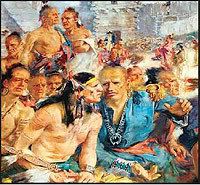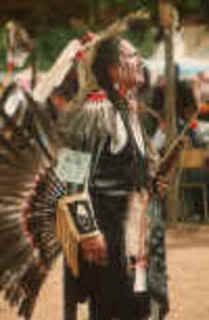December 18, 2008
Now another storm blasts through, this time with even worse life-threatening temperatures. The National Weather Service states that a person could suffer from frostbite within ten minutes or less in these temperatures. At -60*F, it takes only one minute for exposed skin to become frostbitten. There are many people on the reservations that do not have adequate heating and are suffering horribly in these brutal temperatures
December 18. 2008
Link Center Foundation (LCF), a non profit 501C3 organization, is desperately seeking funding for emergency heating assistance for the elders, the disabled, and/or the seriously ill on the Reservations. Also, there are often children found in the homes of elders. According to statistics, nearly 60% of the elders are raising their grandchildren or great-grandchildren.
"YOU Can Make A Difference!"
Our goal is to raise $20,000.We are not grant-funded at this time. We depend on YOU, the individual donor, to help these families in crisis.
Average income on the Oglala Lakota Sioux Pine Ridge Reservation is about $3,500.00 per YEAR. Jobs are extremely scarce; unemployment hovers around 85% on this 11,000-square-mile reservation which houses about 40,000 people. The other Lakota Reservations face similar economic conditions.
Death by hypothermia is always a concern on the reservations. Each winter (October – March), temperatures drop well below 0*F. Many families must choose between food and heat. In some cases, they have neither.
Federal LHEAP and Tribal Assistance Programs offer each low-income family approximately $300 per year. With the current rate of propane at $2.20 per gallon, this provides only 136 gallons – about enough fuel for 2 to 4 weeks (depending on the harsh weather).
Propane prices have already risen about 33% since last winter, and are expected to rise much higher as this winter goes on. Those families surviving with electric heat also face major increases in cost.
Propane companies require minimum amounts of propane to be purchased before delivery (currently $125 to $355 depending on the company). These minimum requirements are expected to skyrocket as the high cost of truck fuel increases. This makes families struggle even harder to accumulate enough funds at one time to ensure a delivery.
The Link Center Foundation has already received numerous emergency assistance applications that cannot be filled due to lack of funds. With propane, wood, and electricity prices continually rising, many more requests for help are expected to arrive.95% of ALL donations to our heating/utility fund are USED for the heating/utility fund. The remaining 5% covers bank, credit card, and processing fees.
All applicants are screened and documented
Payments are made directly to utility, propane, wood, or heat equipment companies
Donations carefully tracked and accountable
No donation too small
Note:As with all Non-Profits, your donations are tax deductible to the extent allowable by law.Please consult your tax advisor.Please mark your check: "Utility and Heating Fund"Please send donations to:Link Center FoundationP.O. Box 576Firestone, CO 80520-0576
http://www.linkcenterfoundation.org/id6.html
http://www.consciousalliance.org/educate.pine.ridge.htm
http://www.linkcenterfoundation.org/
http://uk.youtube.com/user/JohnWindChannel
http://www.aimovement.org/
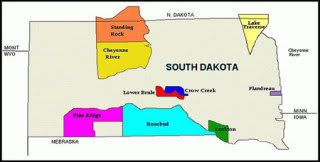
"The Arrogance of Ignorance; Hidden Away, Out of Sight and Out of Mind"
A Special Resource Report: Regarding life, conditions, and hope on the Pine Ridge Oglala Lakota (Sioux) Reservation of SD
This is an article of facts about the lives of modern-day American Indians, a topic most mainstream American news organizations will not discuss. It is not a plea for charity. It is not a promotion for non-profit organizations. It is not aimed for pity. It is not even an effort to detail cause and effect. It is, however, an effort to dispel ignorancex. a massive, pervasive, societal ignorance filled with illusions and caricatures which, ultimately, serve only to corrupt the intelligence and decent intent of the average mainstream citizen. Only through knowledge and understanding can solutions be found. But facts must be known first.
Then, it is the reader’s choice what to do with those facts.Hidden away, out of sight but dotting the landscape of America, are the little known or forgotten Reservations of the Indigenous People of our land. Sadly, the average U.S. mainstream resident knows almost nothing about the people of the Native American reservations other than what romanticized or caricaturized versions they see on film or as the print media stereotypes of oil or casino-rich Indians. Most assume that whatever poverty exists on a reservation is most certainly comparable to that which they might experience themselves. Further, they assume it is curable by the same means they would use.But that is the arrogance of ignorance. Our dominant society is accustomed to being exposed to poverty.
It’s nearly invisible because it is everywhere. We drive through our cities with a blind eye, numb to the suffering on the streets, or we shake our heads and turn away, assuming help is on the way. After all, it’s known that the government and the big charities are helping the needy in nearly every corner of the world.But the question begs: What about the sovereign nations on America’s own soil, within this country, a part and yet apart from mainstream society? What about these Reservations that few people ever see?Oddly enough, the case could be made that more Europeans and Australians know and understand the cultures and conditions of our Indigenous people better Americans do.Moreover, what the Europeans and Australians know is that there are a number of very fortunate Native American Nations whose people are able to earn a very good living due to casino income, natural resource income, a good job market from nearby cities, or from some other source.
They also know, however, that a staggering number of residents on Native American reservations live in abject, incomprehensible conditions rivaling, or even surpassing, that of many Third World countries.This article chronicles just one Nation: the Oglala Lakota (Sioux) Nation of the Pine Ridge Reservation in South Dakota. Yet the name and only a few details could easily be changed to describe a host of othersx. the Dineh (Navajo), Ute Mountain Ute, Tohono O’odham, Pima, Yaqui, Apache, the Brule’ Lakota (Sioux) x.the list is long.But this is not an article of hopelessness. Despite nearly-insurmountable conditions, few resources, and against unbelievable odds, Nation after Nation of Indigenous leaders and their people are working hard to counteract decades of oppression and forced destruction of their cultures, to bring their citizens back to a life of self-respect and self-sufficiency in today’s world.In the meantime, these words will serve simply to dispel a few illusions and make public part of that which is hidden away, out of sight, out of mind, in the richest country in the world. It seeks to dispel the arrogance of ignorance.
Demographic Information
The Pine Ridge Oglala Lakota (Sioux) Indian Reservation sits in Bennett, Jackson, and Shannon Counties and is located in the southwest corner of South Dakota, fifty miles east of the Wyoming border.
The 11,000-square mile (approximately 2.7 million acres) Pine Ridge Reservation is the second-largest Native American Reservation within the United States. It is roughly the size of the State of Connecticut. According to the Oglala Sioux tribal statistics, approximately 1.7 million acres of this land are owned by the Tribe or by tribal members.
The Reservation is divided into eight districts: Eagle Nest, Pass Creek, Wakpamni, LaCreek, Pine Ridge, White Clay, Medicine Root, Porcupine, and Wounded Knee.
The topography of the Pine Ridge Reservation includes the barren Badlands, rolling grassland hills, dryland prairie, and areas dotted with pine trees
.
The Pine Ridge Reservation is home to approximately 40,000 persons, 35% of which are under the age of 18. The latest Federal Census shows the median age to be 20.6 years. Approximately half the residents of the Reservation are registered tribal members of the Oglala Lakota Sioux Nation.
According to the most recent Federal Census, 58.7% of the grandparents on the Reservation are responsible for raising their own grandchildren.
The population is slowly but steadily rising, despite the severe conditions on the Reservation, as more and more Oglala Lakota return home from far-away cities to live within their societal values, be with their families, and assist with the revitalization of their culture and their Nation.
Employment Information
Recent reports vary but many point out that the median income on the Pine Ridge Reservation is approximately $2,600 to $3,500 per year.
The unemployment rate on Pine Ridge is said to be approximately 83-85% and can be higher during the winter months when travel is difficult or often impossible.
According to 2006 resources, about 97% of the population lives below Federal poverty levels.
There is little industry, technology, or commercial infrastructure on the Reservation to provide employment.
Rapid City, South Dakota is the nearest town of size (population approximately 57,700) for those who can travel to find work. It is located 120 miles from the Reservation. The nearest large city to Pine Ridge is Denver, Colorado located some 350 miles away.
Life Expectancy and Health Conditions
Some figures state that the life expectancy on the Reservation is 48 years old for men and 52 for women. Other reports state that the average life expectancy on the Reservation is 45 years old. These statistics are far from the 77.5 years of age life expectancy average found in the United States as a whole. According to current USDA Rural Development documents, the Lakota have the lowest life expectancy of any group in America.
Teenage suicide rate on the Pine Ridge Reservation is 150% higher than the U.S. national average for this age group.
The infant mortality rate is the highest on this continent and is about 300% higher than the U.S. national average.
More than half the Reservation's adults battle addiction and disease. Alcoholism, diabetes, heart disease, cancer, and malnutrition are pervasive.
The rate of diabetes on the Reservation is reported to be 800% higher than the U.S. national average.
Recent reports indicate that almost 50% of the adults on the Reservation over the age of 40 have diabetes.
As a result of the high rate of diabetes on the Reservation, diabetic-related blindness, amputations, and kidney failure are common.
The tuberculosis rate on the Pine Ridge Reservation is approximately 800% higher than the U.S. national average.
Cervical cancer is 500% higher than the U.S. national average.
It is reported that at least 60% of the homes on the Pine Ridge Reservation are infested with Black Mold, Stachybotrys. This infestation causes an often-fatal condition with infants, children, elderly, those with damaged immune systems, and those with lung and pulmonary conditions at the highest risk. Exposure to this mold can cause hemorrhaging of the lungs and brain as well as cancer.
A Federal Commodity Food Program is active but supplies mostly inappropriate foods (high in carbohydrate and/or sugar) for the largely diabetic population of the Reservation.
A small non-profit Food Co-op is in operation on the Reservation but is available only for those with funds to participate.
Health Care
Many Reservation residents live without health care due to vast travel distances involved in accessing that care. Additional factors include under-funded, under-staffed medical facilities and outdated or non-existent medical equipment.
Preventive healthcare programs are rare.
In most of the treaties between the U.S. Government and Indian Nations, the U.S. government agreed to provide adequate medical care for Indians in return for vast quantities of land. The Indian Health Services (IHS) was set up to administer the health care for Indians under these treaties and receives an appropriation each year to fund Indian health care. Unfortunately, the appropriation is very small compared to the need and there is little hope for increased funding from Congress. The IHS is understaffed and ill-equipped and can’t possibly address the needs of Indian communities. Nowhere is this more apparent than on the Pine Ridge Reservation.
Education Issues
School drop-out rate is over 70%.
According to a Bureau of Indian Affairs (BIA) report, the Pine Ridge Reservation schools are in the bottom 10% of school funding by U.S. Department of Education and the Bureau of Indian Affairs.
Teacher turnover is 800% that of the U.S. national average
Housing Conditions and Homelessness
The small BIA/Tribal Housing Authority homes on the Pine Ridge Reservation are overcrowded and scarce, resulting in many homeless families who often use tents or cars for shelter. Many families live in old cabins or dilapidated mobile homes and trailers.
According to a 2003 report from South Dakota State University, the majority of the current Tribal Housing Authority homes were built from 1970-1979. The report brings to light that a great percentage of that original construction by the BIA (Bureau of Indian Affairs) was "shoddy and substandard." The report also states that 26% of the housing units on the Reservation are mobile homes, often purchased or obtained (through donations) as used, low-value units with negative-value equity.
Even though there is a large homeless population on the Reservation, most families never turn away a relative no matter how distant the blood relation. Consequently, many homes often have large numbers of people living in them.
In a recent case study, the Tribal Council estimated a need for at least 4,000 new homes in order to combat the homeless situation.
There is an estimated average of 17 people living in each family home (a home which may only have two to three rooms). Some larger homes, built for 6 to 8 people, have up to 30 people living in them.
Over-all, 59% of the Reservation homes are substandard.
Over 33% of the Reservation homes lack basic water and sewage systems as well as electricity.
Many residents must carry (often contaminated) water from the local rivers daily for their personal needs.
Some Reservation families are forced to sleep on dirt floors.
Without basic insulation or central heating in their homes, many residents on the Pine Ridge Reservation use their ovens to heat their homes.
Many Reservation homes lack adequate insulation. Even more homes lack central heating.
Periodically, Reservation residents are found dead from hypothermia (freezing).
It is reported that at least 60% of the homes on the Pine Ridge Reservation need to be burned to the ground and replaced with new housing due to infestation of the potentially-fatal Black Mold, Stachybotrys. There is no insurance or government program to assist families in replacing their homes.
39% of the homes on the Pine Ridge Reservation have no electricity.
The most common form of heating fuel is propane. Wood-burning is the second most common form of heating a home although wood supplies are often expensive or difficult to obtain.
Many Reservation homes lack basic furniture and appliances such as beds, refrigerators, and stoves.
60% of Reservation families have no land-line telephone. The Tribe has recently issued basic cell phones to the residents. However, these cell phones (commonly called commodity phones) do not operate off the Reservation at all and are often inoperable in the rural areas on the Reservation or during storms or wind.
Computers and internet connections are very rare.
Federal and tribal heat assistance programs (such as LLEAP) are limited by their funding. In the winter of 2005-2006, the average one-time only payment to a family was said to be approximately $250-$300 to cover the entire winter. For many, that amount did not even fill their propane heating tanks one time.
Life on the Reservation
Most Reservation families live in rural and often isolated areas.
The largest town on the Reservation is the village of Pine Ridge which has a population of approximately 5,720 people and is the administrative center for the Reservation.
There are few improved (paved) roads on the Reservation and most of the rural homes are inaccessible during times of rain or snow.
Weather is extreme on the Reservation. Severe winds are always a factor. Traditionally, summer temperatures reach well over 110*F and winters bring bitter cold with temperatures that can reach -50*F below zero or worse. Flooding, tornados, or wildfires are always a risk.
The Pine Ridge Reservation still has no banks, discount stores, or movie theaters. It has only one grocery store of any moderate size and it is located in the village of Pine Ridge on the Reservation. A motel just opened in 2006 near the Oglala Lakota College at Kyle, South Dakota. There are said to be about 8 Bed and Breakfast or campsite locations found across the Reservation but that number varies from time to time since most are part of a private home.
Several of the banks and lending institutions nearest to the Reservation have been targeted for investigation of fraudulent or predatory lending practices, with the citizens of the Pine Ridge Reservation as their victims.
There are no public libraries except one at the Oglala Lakota College.
There is one radio station on the Pine Ridge Reservation. KILI 90.1FM is located near the town of Porcupine on the Reservation.
Transportation
There is no public transportation available on the Reservation.
Only a minority of Reservation residents own an operable automobile.
Predominant form of travel for all ages on the Reservation is walking or hitchhiking.
There is one very small airport on the Reservation servicing both the Pine Ridge Reservation and Shannon County. It's longest, paved runway extends 4,969 feet. There are no commercial flights available. The majority of flights using the airport are Federal, State, or County Government-related.
The nearest commercial airport and/or commercial bus line is located in Rapid City, South Dakota (approximately 120 miles away).
Alcoholism
Alcoholism affects eight out of ten families on the Reservation.
The death rate from alcohol-related problems on the Reservation is 300% higher than the remaining US population.
The Oglala Lakota Nation has prohibited the sale and possession of alcohol on the Pine Ridge Reservation since the early 1970's. However, the town of Whiteclay, Nebraska (which sits 400 yards off the Reservation border in a contested "buffer" zone) has approximately 14 residents and four liquor stores which sell over 4.1 million cans of beer each year resulting in a $3million annual trade. Unlike other Nebraska communities, Whiteclay exists only to sell liquor and make money. It has no schools, no churches, no civic organizations, no parks, no benches, no public bathrooms, no fire service and no law enforcement. Tribal officials have repeatedly pleaded with the State of Nebraska to close these liquor stores or enforce the State laws regulating liquor stores but have been consistently refused.
Water and Aquifer Contamination
Many wells and much of the water and land on the Reservation is contaminated with pesticides and other poisons from farming, mining, open dumps, and commercial and governmental mining operations outside the Reservation. A further source of contamination is buried ordnance and hazardous materials from closed U.S. military bombing ranges on the Reservation.
Scientific studies show that the High Plains/Oglala Aquifer which begins underneath the Pine Ridge Reservation is predicted to run dry in less than 30 years due to commercial interest use and dryland farming in numerous states south of the Reservation. This critical North American underground water resource is not renewable at anything near the present consumption rate. The recent years of drought have simply accelerated the problem.
Scientific studies show that much of the High Plains/Oglala Aquifer has been contaminated with farming pesticides and commercial, factory, mining, and industrial contaminants in the States of South Dakota, Wyoming, Nebraska, Kansas, Colorado, New Mexico, Oklahoma, and Texas.
Sovereignty and Tribal Government
By Treaty, the Tribal nations are considered to have sovereign governmental status. They have a special government to government relationship with the United States. Interactions with the U.S. Government and the Department of Interior (and its Bureau of Indian Affairs) are supposed to be through Treaty negotiations and most Federal programs (such as Indian Health Services) were purchased by the Tribal nations (usually with land) and guaranteed by Treaty. This is specifically true for the Oglala Lakota (Sioux) Nation of the Pine Ridge Reservation.
The Oglala Lakota (Sioux) Tribal government operates under a constitution consistent with the Indian Reorganization Act of 1934 and approved by the Tribal membership and Tribal Council of the Oglala Lakota (Sioux) Tribe. The Tribe is governed by an elected body consisting of a 5 member Executive Committee and an 18 member Tribal Council, all of whom serve a four year term.
Hope
Currently, there are various efforts underway to implement innovative techniques and solutions to Reservation problems. These projects include community volunteer groups, alternative education programs, wind or water energy initiatives, substance abuse programs, cultural and language programs, employment opportunities, cottage industries, promotion of artists and musicians, small co-op businesses, etc. However, funding for these programs is highly limited.
There are several very small projects now working to help with the housing shortage. Some of these involve using donated mobile homes, community-built sod housing, other community-built housing (such as Habitat for Humanity), exploring possible use of unused FEMA mobile homes, and other alternate solutions. Unfortunately, funding is highly limited.
The Tribal Council Housing Authority is working as hard as it can to build new homes and repair existing structures but it is limited by the small, limited amount of funding available.
There are a few reputable small non-profit organizations attempting to sincerely assist the people of the Pine Ridge Reservation in their efforts to resolve and mitigate existing problems. However, funding for these programs is currently highly limited.
There is one small independent (non-IHS) clinic on the Reservation at the community of Porcupine. It was founded and is controlled by the Lakota community. It just recently obtained its first dialysis machine and runs an aggressive program to combat diabetes. However, funding is very limited and is obtained locally and through grants.
The Oglala Lakota are a determined, intelligent, and proud People who are working hard to over-come their Reservation problems. Against all odds, with minimal resources, they are slowly working to re-claim their self-sufficiency, their culture, and their life.
These statistics concerning the Pine Ridge Oglala Lakota (Sioux) Reservation were compiled from recent Political, Educational, Government, Non-Profit, and Tribal Publications.
An earlier version was published by the same author in 2002 entitled, "Hidden Away, in the Land of Plenty."
Contact the author if you wish a list of the resources and publications used for this report.
Stephanie M. Schwartz may be reached at SilvrDrach@Gmail.com This and other articles may be viewed on the internet at the website,The Writings of Stephanie M. Schwartzwww.SilvrDrach.homestead.com
This article may be reprinted and reproduced unedited with proper attribution and sourcing for non-profit, educational, news, or archival purposes.
